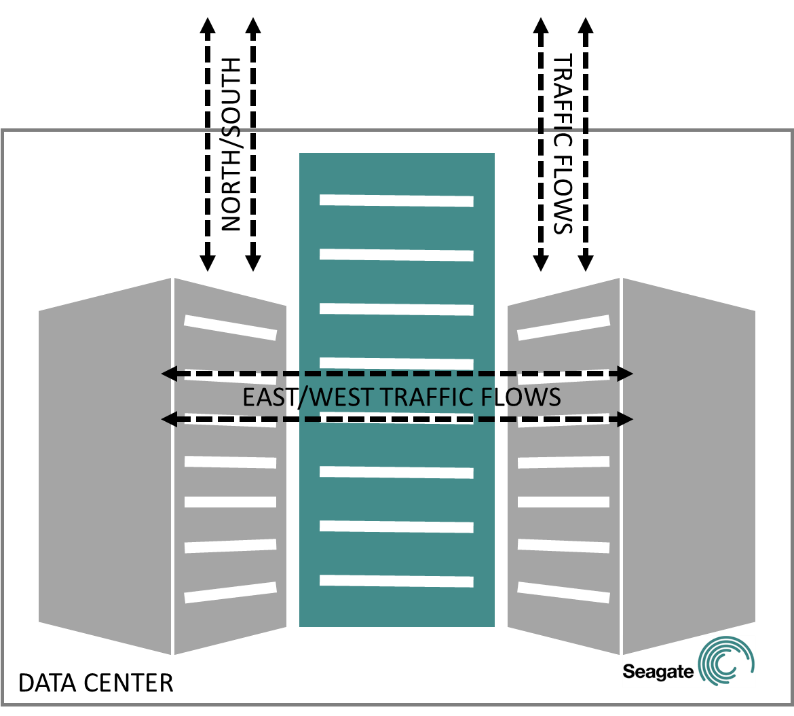Data replication is often a critical step when initiating a new backup service. Therefore it is an important part of the planning process, prior to implementation. This post will review a few items to consider, as you develop your data replication strategy and provide a short case study from a large healthcare organization that recently made this decision.
Determining Peak Hours
When calculating bandwidth for data replication you must consider your organization’s peak hours. Peak hours are defined as times when the Rate of Change may be higher due to an increase of workload. If this is the case for your organization, you need to architect your bandwidth to account for bursts during peak hours.
There are many ways to measure your bandwidth usage. Some organizations may consider using bandwidth measurement software, such as NetWorx or NetBalancer. You can also gather this information by looking at historical traffic patterns on a day that is historically busier. The objective is to find the peak times and determine how much more activity happens during those hours (i.e., 2 – 3 times) and size your bandwidth for this rate. If you organization has a peak day, like end of month or end of quarter or is sensitive to things like weather which drives incremental eCommerce sales, and most of the activity is concentrated into an 8 hour period; you would calculate your Rate of Change over 8 hours not 24 hours.
Another way to measure bandwidth usage would be to look at your east/west traffic (i.e., server-to-server traffic) and determine the amount of network traffic you have between the internal systems. Data traffic patterns often show that bandwidth is primarily consumed by backups and different tiers of “chatter.” Using this method you can estimate that an additional 10-20% of the east/west network traffic would be needed to accommodate your north/south traffic (i.e., client-to-server traffic). If your east/west network traffic is 100 GB, then you can assume that the north/south network traffic would be approximately 10 – 20 GB.
Preparing Infrastructure for Replication Activities
Increasing bandwidth without the necessary hardware can continue to limit your data replication capabilities. Infrastructure components to take into consideration when scaling your bandwidth are routers and firewalls. Routers and firewalls are rated for different levels of data transfer and bandwidth compatibility. After you determine the bandwidth of the circuit you need to ensure your router(s) and firewall(s) have the appropriate ports to accept the bandwidth. When preparing for data replication activities through the wire, ensure your router(s) and firewall(s) can handle the amount of data to be transferred in the time allotted (Recovery Point Objectives, RPOs).
Cost of Bandwidth vs. Time to Replicate Data
It’s common practice for local telecomm providers, such as AT&T, CenturyLink and Comcast, to offer bandwidth on a flat rate circuit with increasing capacity (i.e., 100MB, 1GB, , 40GB, 100GB). When evaluating the incremental cost of upgrading to the next bandwidth size you may consider whether this increase in cost is in alignment with organizations Recovery Point Objective for replicating a database. For example, if you organization is considering a 1GB circuit vs. a 10GB circuit – the cost difference will be approximately $2,000 – $3,000 difference, per month. If the change in bandwidth decreases the time to replicate by a few days, it may not be cost effective to choose the larger circuit.
Case Study
Recently, a large healthcare organization was required to determine their bandwidth requirements for offsite replication to a Disaster Recovery site. Their first step was to measure east/west network traffic within the production data center. This information was used to gauge or determine the needs of north/south replication network traffic. Once the organization had an idea of the type and amount of bandwidth needed for replication, they looked to their network providers to price out multiple bandwidth circuits. Due to the cost difference between a 10GB and 40GB bandwidth circuit, the organization decided to install the 10GB circuit and carefully monitor the usage of the circuit.
This healthcare organization chose to evaluate their bandwidth needs using a cost-benefit analysis model. However, there are several things to consider when looking at replication bandwidth and you need to take into account what is best for your organization.
We’d love to hear from you. Please send us any feedback or questions to portalfeedback@seagate.com and remember you can always reach out to me directly at anne.vincenti







